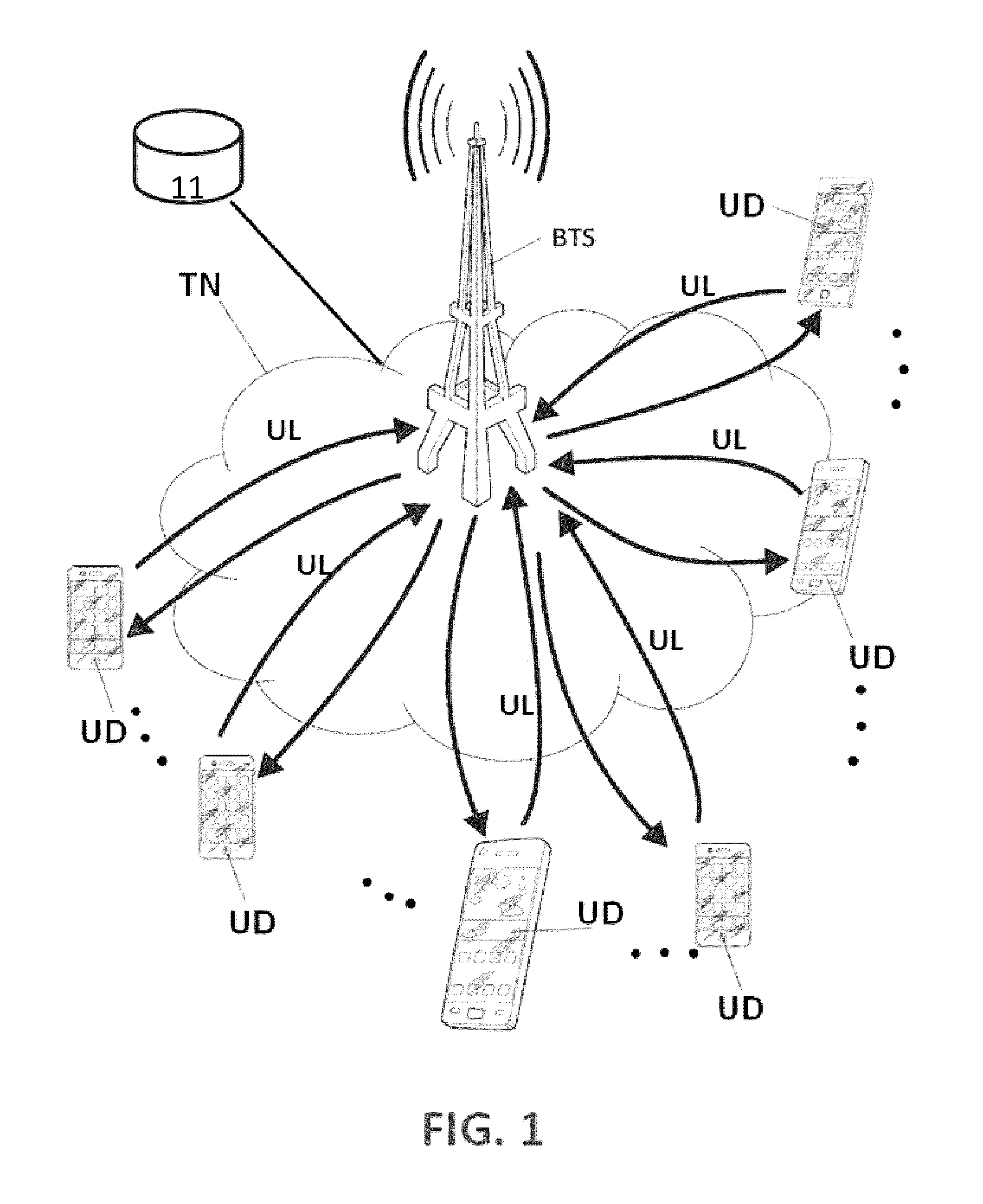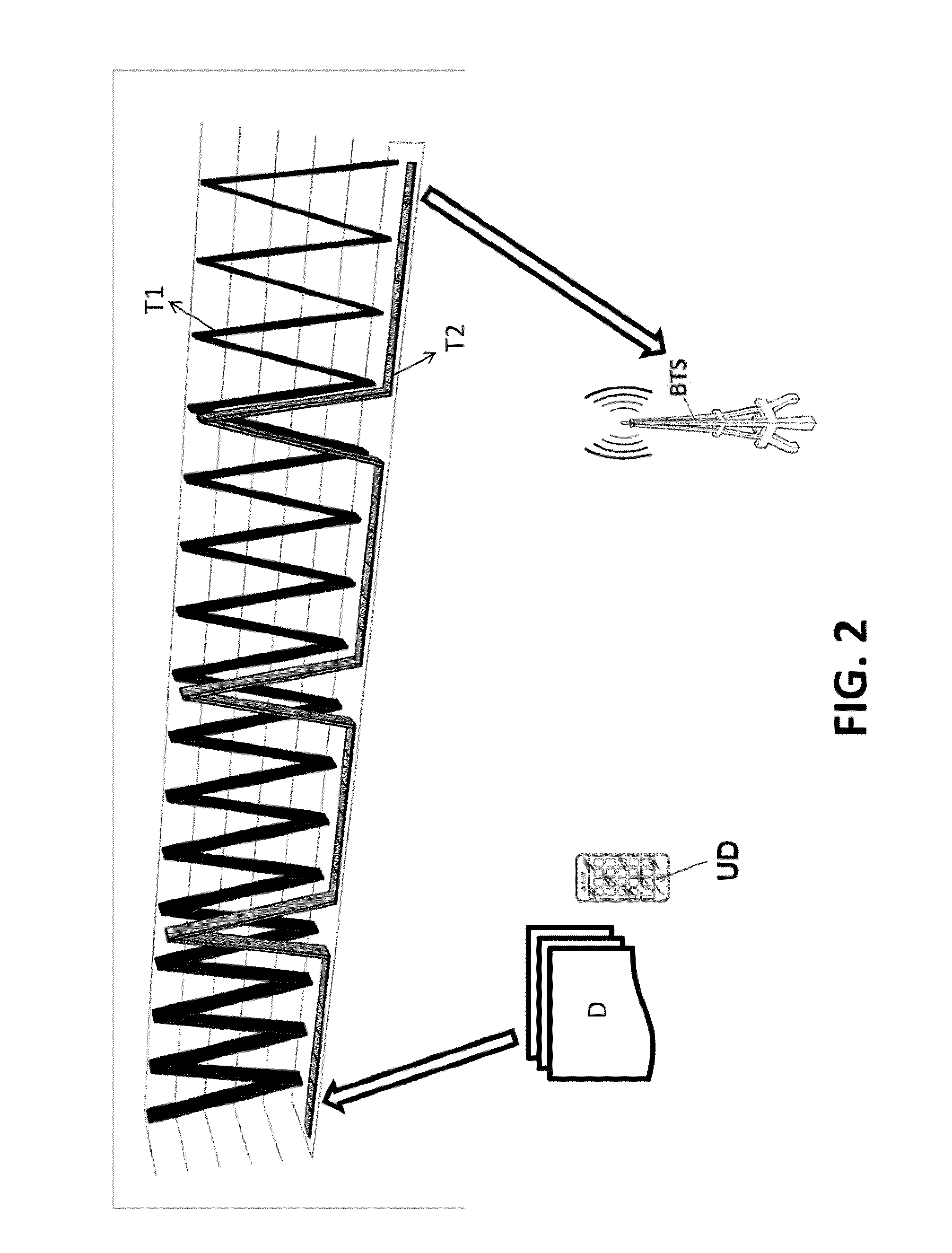Congestion detection
a technology for detecting congestion and telecommunication networks, applied in network traffic/resource management, transmission systems, transmission systems, etc., can solve problems such as congestion/overload in the telecommunication network, large concentration of user devices, and large amount, so as to reduce the number of connections, reduce the consumption of energy in user devices, and reduce the interference of uplinks
- Summary
- Abstract
- Description
- Claims
- Application Information
AI Technical Summary
Benefits of technology
Problems solved by technology
Method used
Image
Examples
Embodiment Construction
[0108]Once the object of the invention has been outlined, specific non-limitative embodiments are described hereinafter. The terms cellular access mobile telecommunication network and telecommunication network (TN) are used interchangeably herein and may refer to the area or zone wherein a BTS (Base Transceiver Station) can supply coverage to user device of said area.
[0109]A method according to the invention is performed on a system comprising a cellular access mobile telecommunications network (TN), in which a data server can be allocated, a plurality of user device (UD), and radio-communication links between the telecommunications network (TN) and the user device (UD), where the data (D) are sent from the user device (UD) to the telecommunications network (TN) in the uplink (UL), and in the downlink (DL) the data are sent from the telecommunications network (TN) to the user device (UD).
[0110]An overload situation in the telecommunication network (TN) is shown in FIG. 1, where a la...
PUM
 Login to View More
Login to View More Abstract
Description
Claims
Application Information
 Login to View More
Login to View More - R&D
- Intellectual Property
- Life Sciences
- Materials
- Tech Scout
- Unparalleled Data Quality
- Higher Quality Content
- 60% Fewer Hallucinations
Browse by: Latest US Patents, China's latest patents, Technical Efficacy Thesaurus, Application Domain, Technology Topic, Popular Technical Reports.
© 2025 PatSnap. All rights reserved.Legal|Privacy policy|Modern Slavery Act Transparency Statement|Sitemap|About US| Contact US: help@patsnap.com



